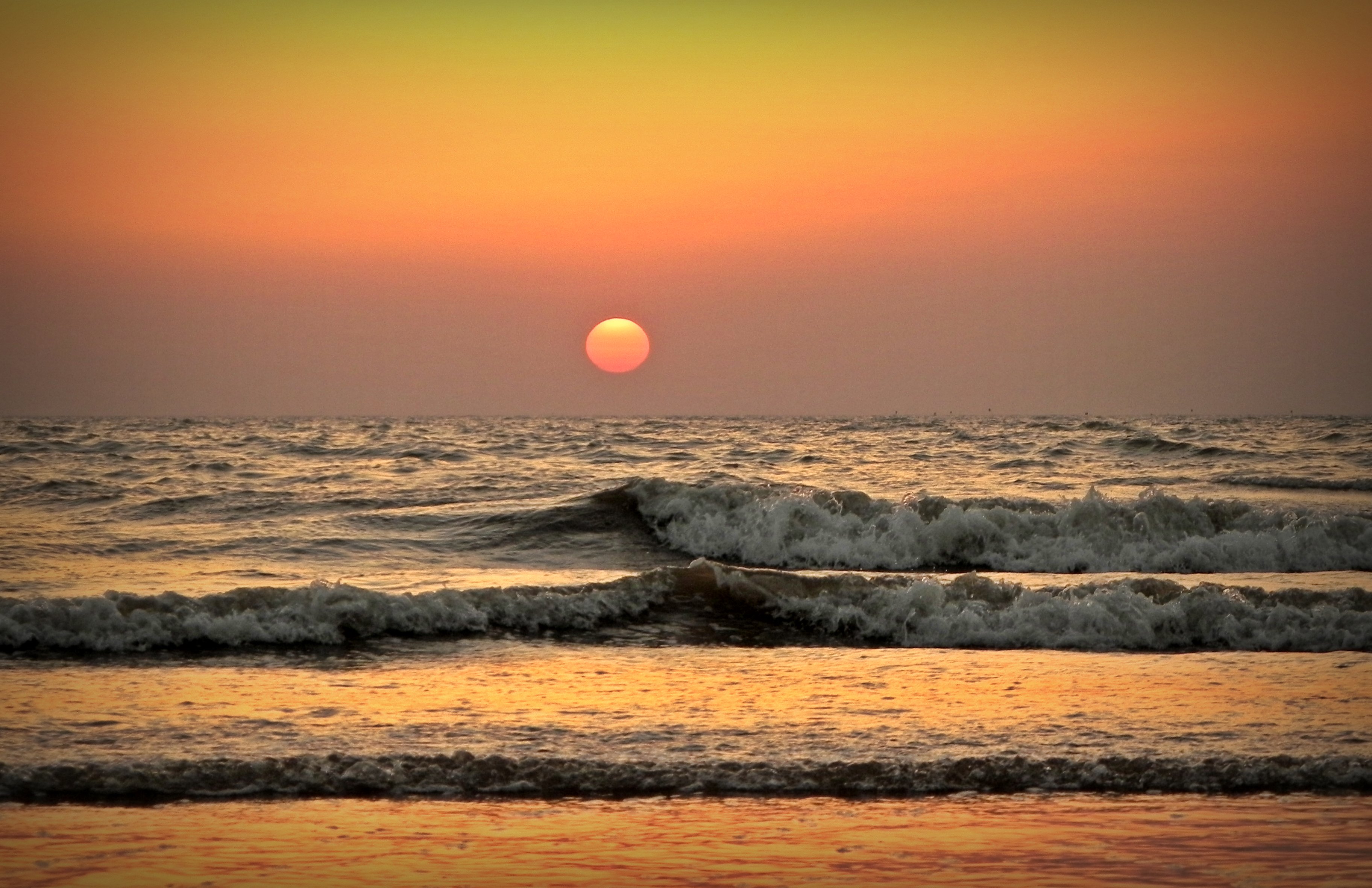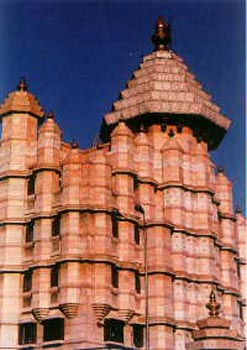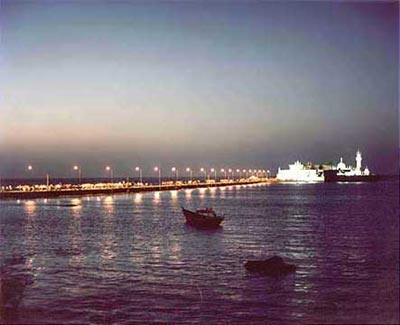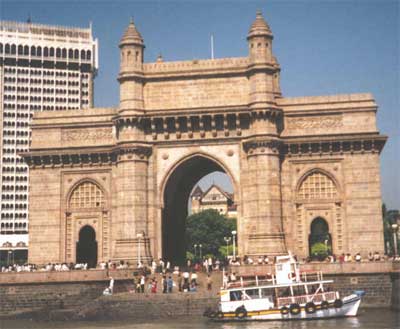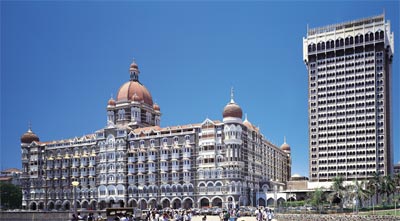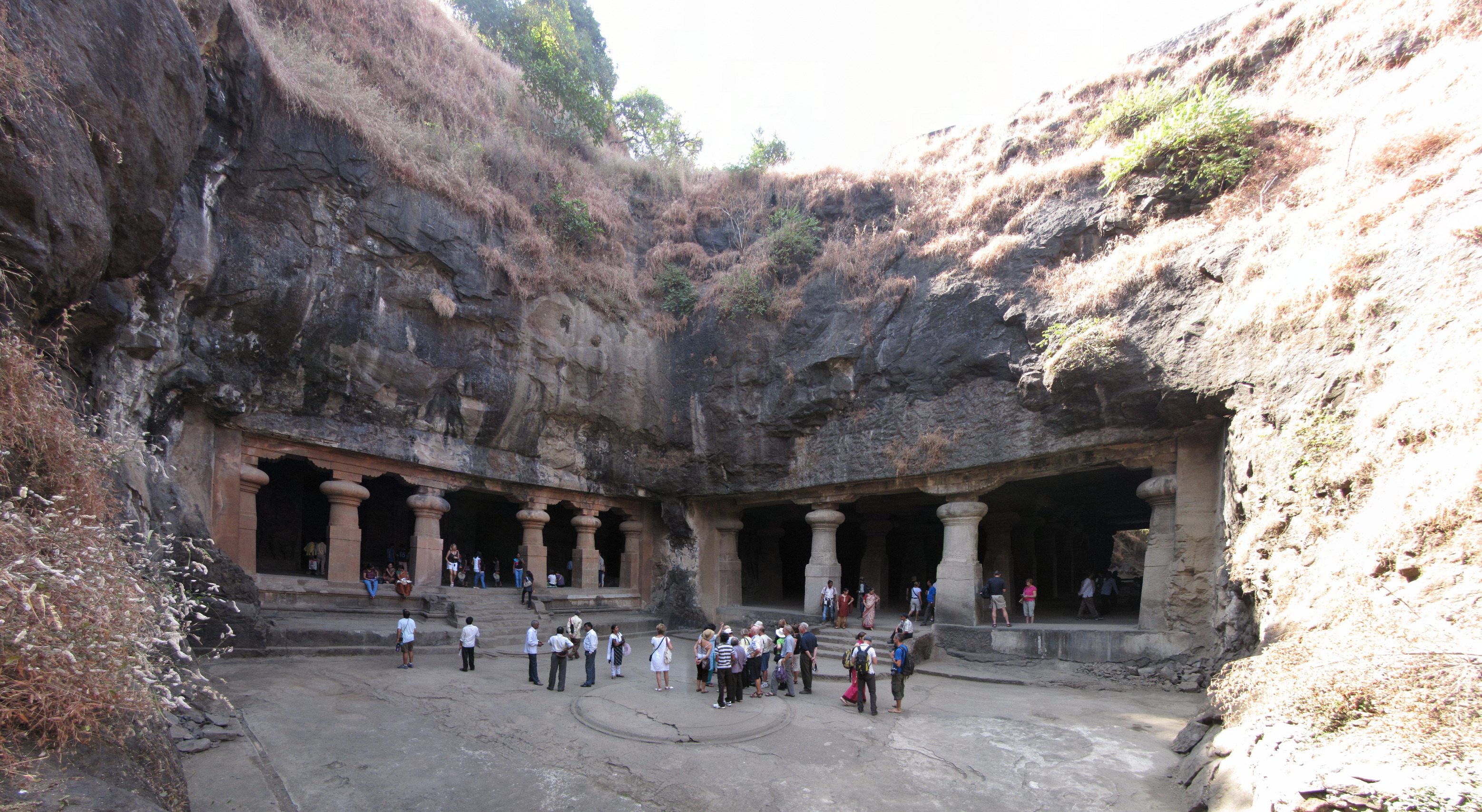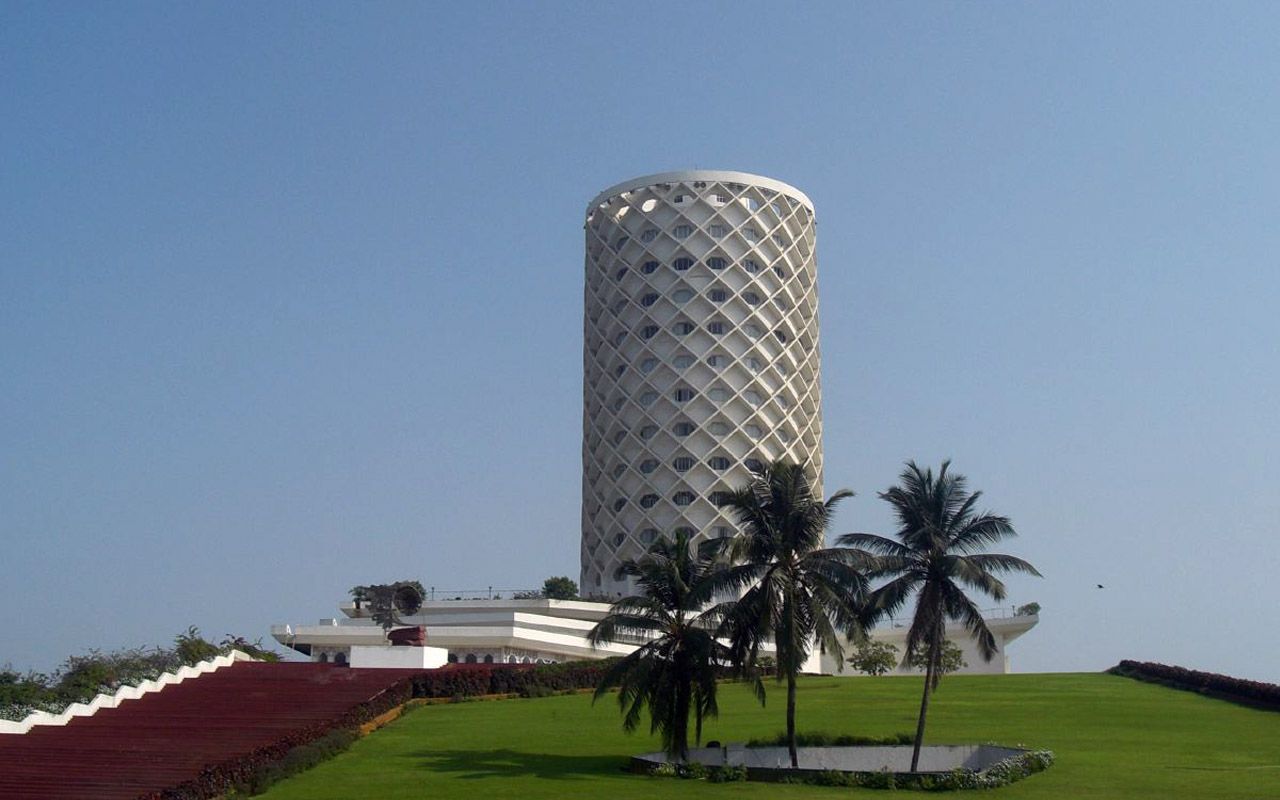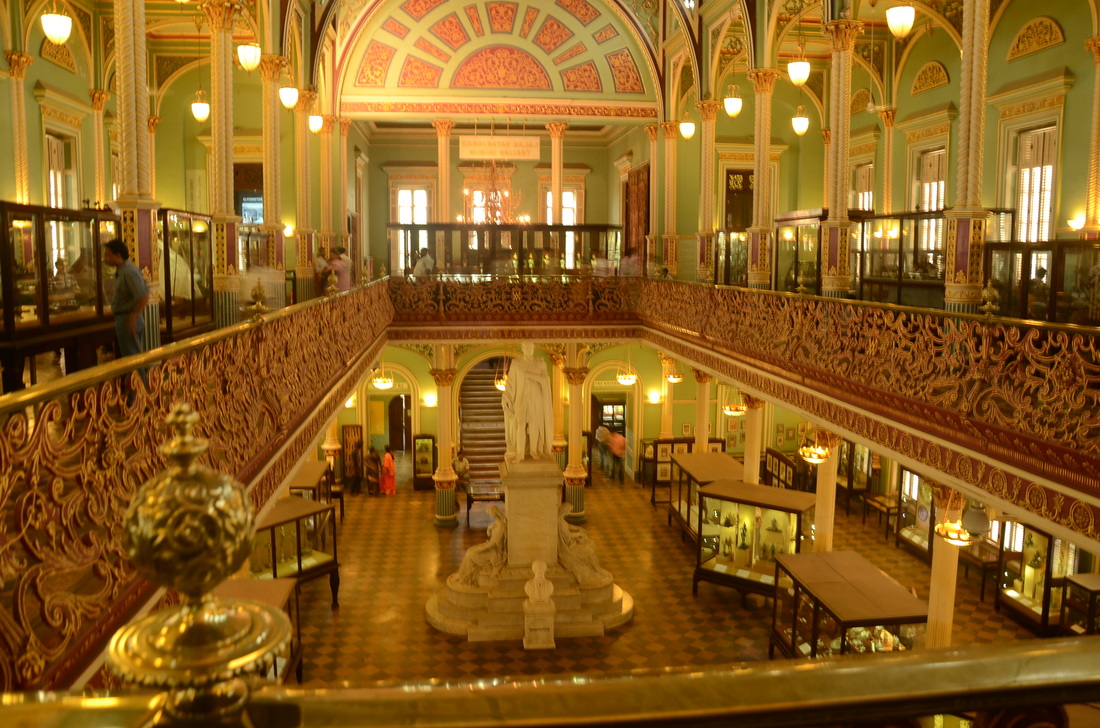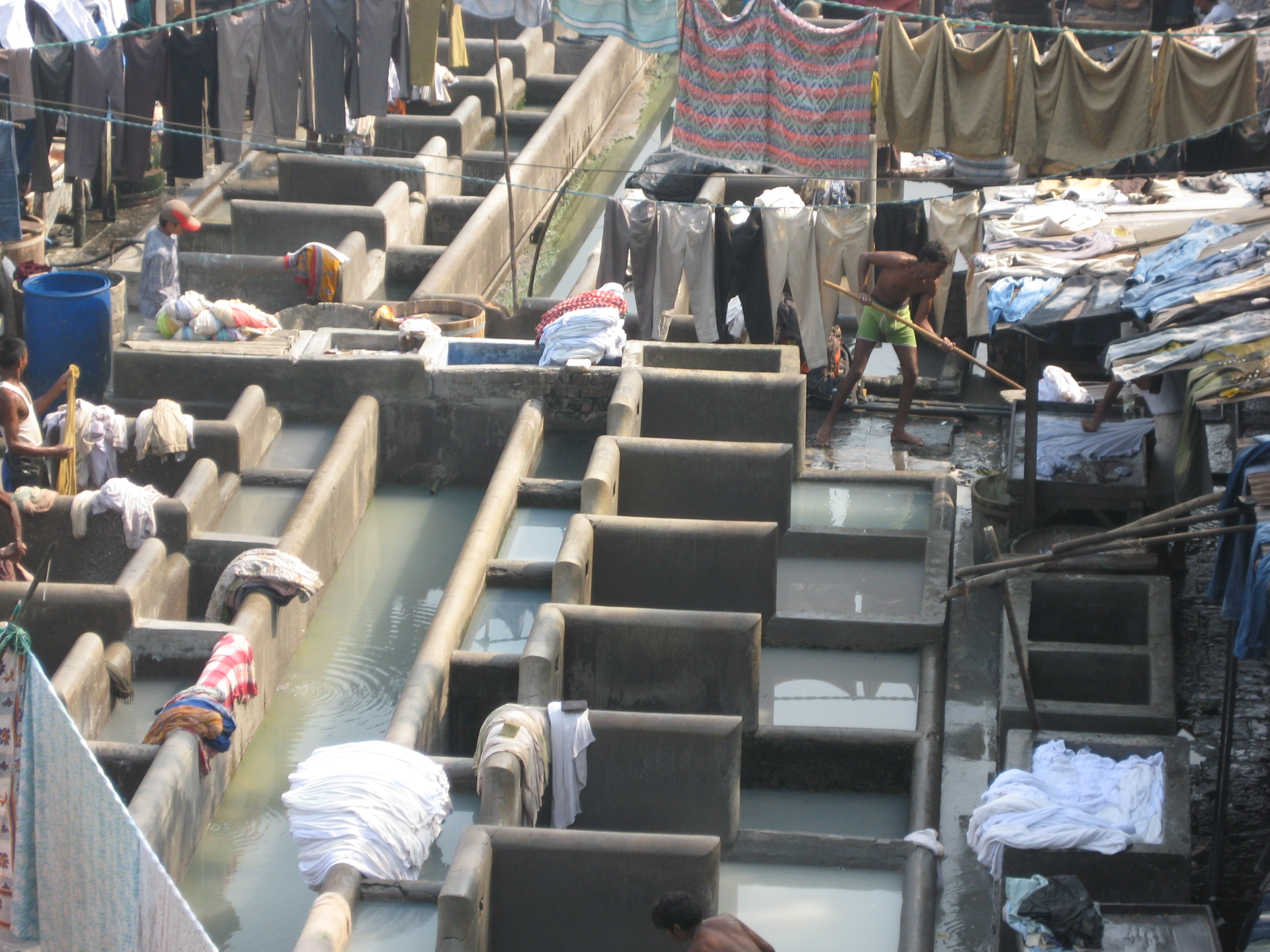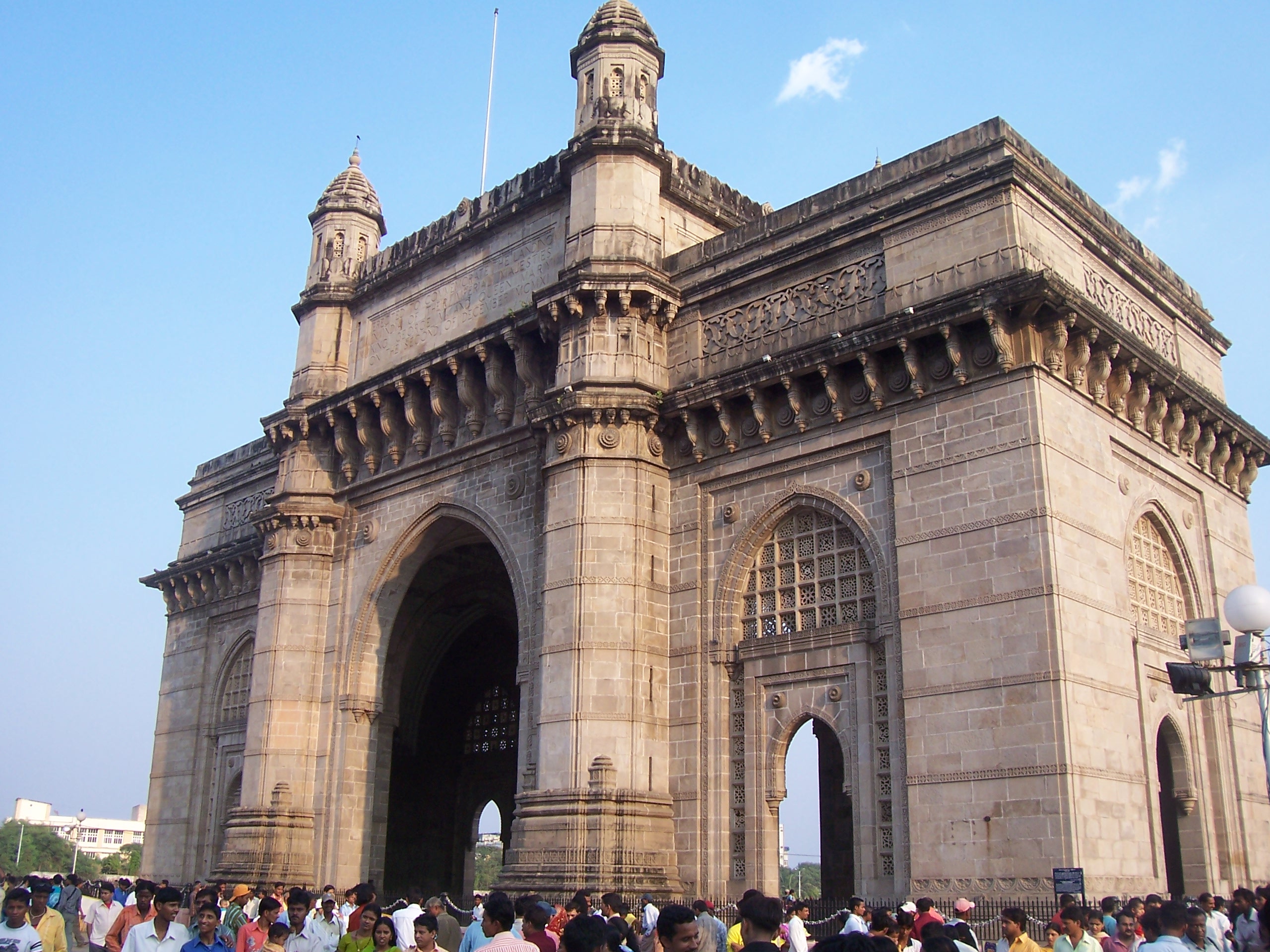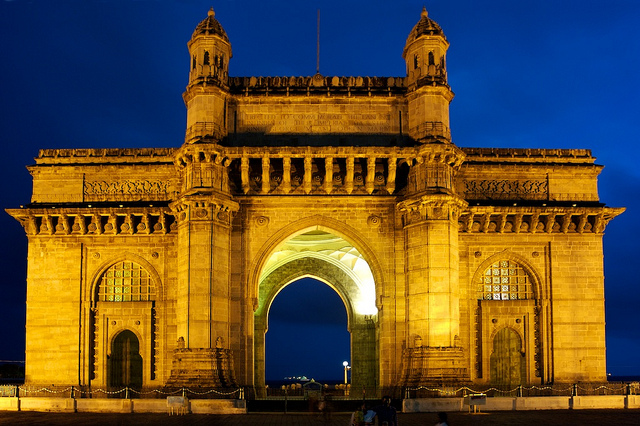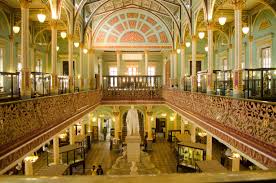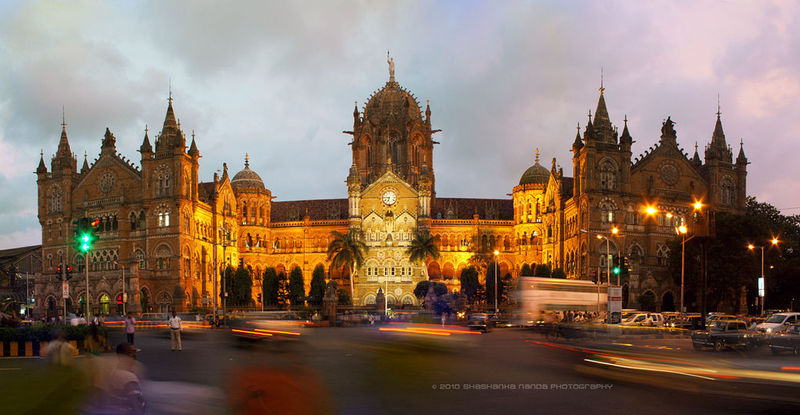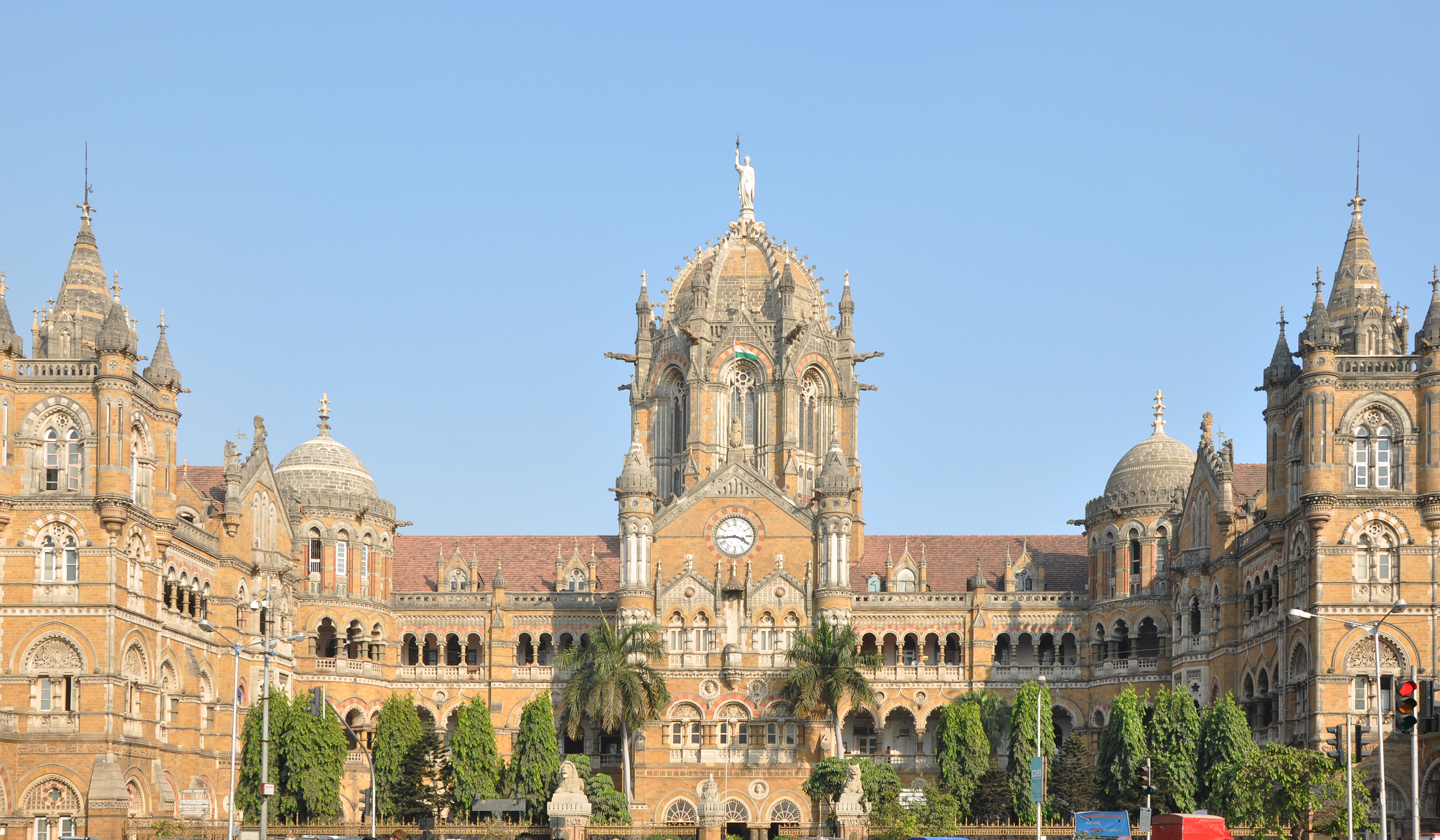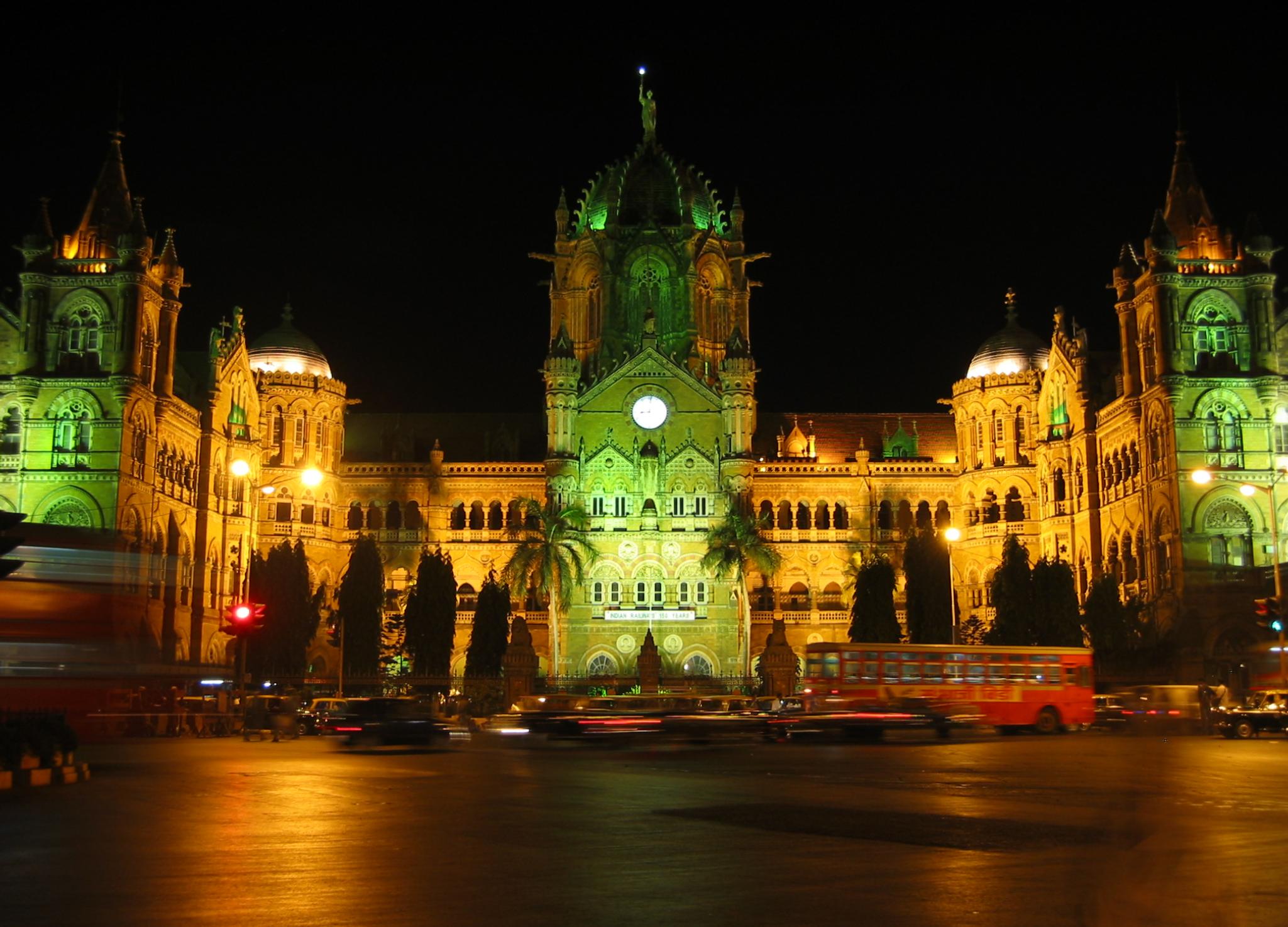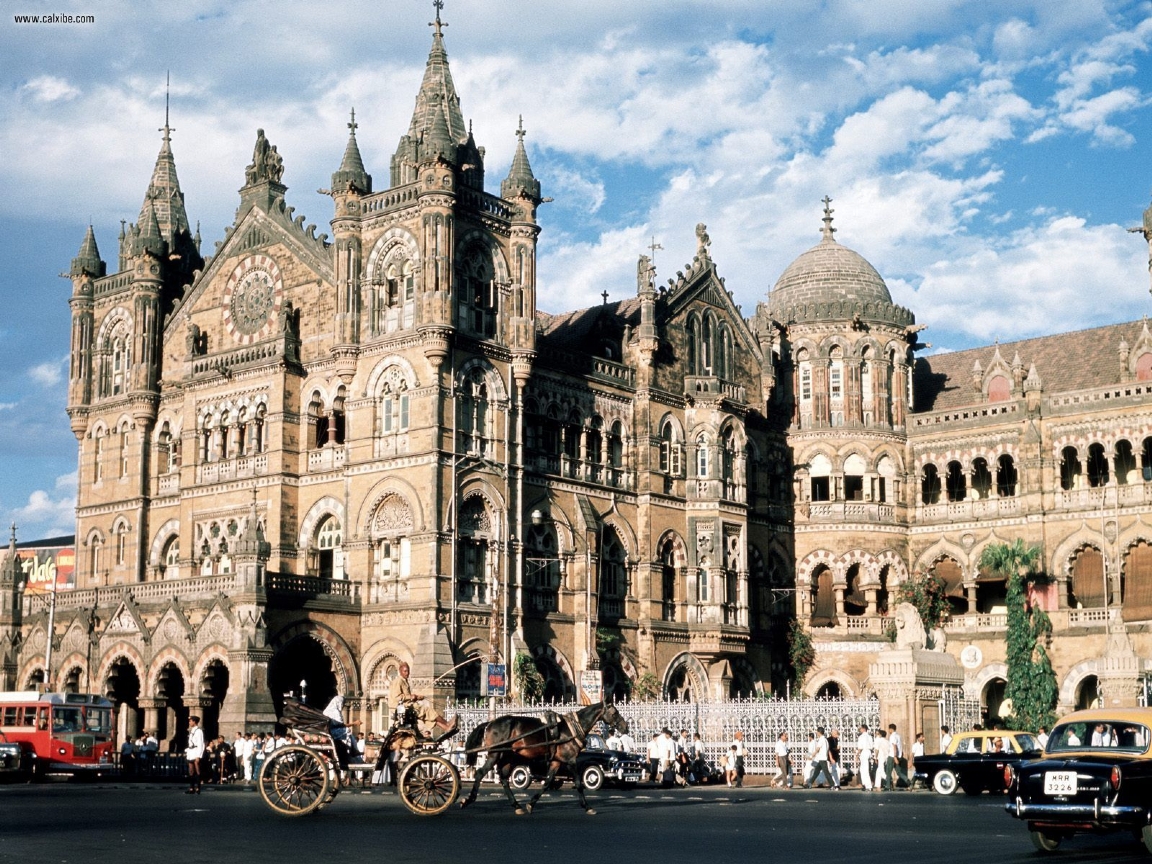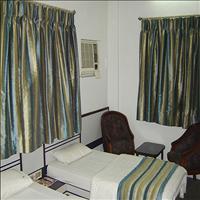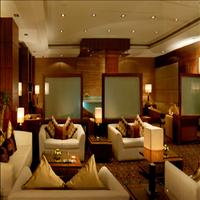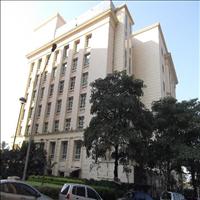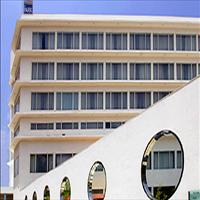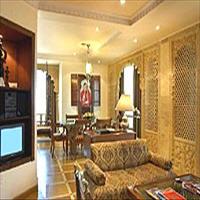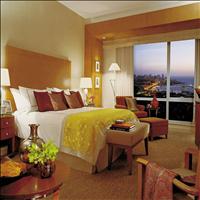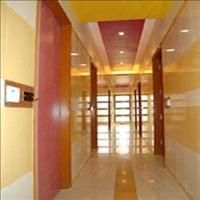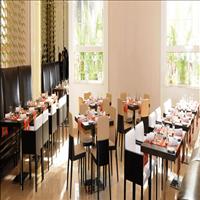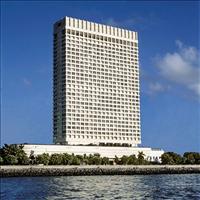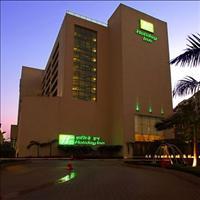Mumbai
The city that never sleeps
General Information
Common Name: -
Other Name: Bombay, District: Mumbai, State: Maharashtra, India
Area: 436 Sq. Km.
Languages Spoken: Marathi, English, Hindi and Gujarathi
Long Distance Code: +91-22
Importance: Financial capital of India; and capital of the state of Maharashtra
Best Time to Visit: September to February and June to August to enjoy the monsoons
International Access: Chattrapati Shivaji International Airport, Mumbai
Description
Mumbai…. India's most dynamic and cosmopolitan city, with frenetic lifestyles and a multicultural society. Mumbai, a hardworking city that never sleeps, is the capital of Maharashtra. People from all over the country come here to fulfill their dreams thus making Mumbai a big melting pot of all the cultures, traditions and languages. This confluence of varied cultural currents and cross currents has given Mumbai a unique position of the most multi-ethnic city of India. This enigmatic city, which houses the richest families of the country, also has the largest slum area of Asia. It has fashion and glamour but pursues the age old customs and values. This contradiction in every phase of life is what makes Mumbai an enchanting place.<br />Once, a sultry tropical archipelago cluster of seven islands is the commercial capital of the Indian sub - continent, today. Forty percent if the country's taxes come from this city alone and half of India's international trade passes through its natural harbours. The much talked about India's underworld, operates in this city.<br />The original inhabitants of the island were fishermen or the 'Koli' tribe, who worshiped a goddess, 'Mumba', and 'aai' in the local Marathi language means mother, hence the city derives its name, Mumbai.<br />Around the third century BC, Mumbai became a part of the Magadh Empire of Ashok. Mumbai was ruled by many rulers and eventually came under the Sultan of Gujarat in the 14th century. Bahadur Shah of Gujarat lost the island to the Portuguese in 1534 A.D. The Portuguese called it Bom Bahia, or the good bay and hence the name Bombay.<br />Bombay was passed on to the British as part of dowry during the wedding of Princess Infanta Catharine de Briganza to Charles II in 1661. After this Bombay never looked back. The British recognized the importance of its port and started with its development, beginning with reclamation of land and merging the seven islands into one big island called Bombay.<br />Bombay played a major role in the freedom movement and after India's independence became the economic centre of the country. In 1960 Mumbai became the unopposed capital of the new state of Maharashtra. Mills and factories producing just about anything are present in Mumbai. Bollywood, India's answer to Hollywood is a booming industry producing maximum number of films than any other country in the world. Being one of the traditional centers of India, Mumbai offers an exciting range of hand woven and hand printed silks and cottons in traditional dresses, as well as in trendiest new fashions.<br />Mumbai with its uniqueness has few distinctive features like the local trains, the Dabbawalas and its own typical fast food which originated here. Sky scrapers and slums, old and new, theatre or cinema, shoppers and foodies' delight, Mumbai entertains every one. The vibrant and bustling capital of Maharashtra is bubbling with social and cultural activities throughout the year. Truly a city that never sleeps, a city of dreams.<br />Location
Mumbai is a cluster of seven islands into one, on the west coast of India just south of the tropic of Cancer. The bay that separates the city from the mainland proved to be an important shipping port for the city throughout its history. Mumbai is also seismically active zone.Climate
Being an island, the city experiences a moderate and sultry weather throughout the year, with a bit of variation during the monsoon. The climate becomes cooler as it rains heavily in the city.
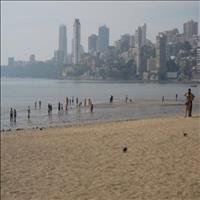 Mumbai is an island gifted with a vast and beautiful sea coast of the Arabian Sea. Earlier being the major port, now the trade activities have been centralized in one area. The chowpatty is the highlight of the beaches of Mumbai.\r\nA sea shore with few hawkers selling goodies is chowpatty in the Mumbai lingo. There are many sea shores but only three chowpattys in Mumbai. The only present in central or the south Mumbai is the Girgaon Chowpatty. The Dadar Chowpatty is in the central part of Mumbai and the Juhu Chowpatty is the suburban part of Mumbai. Along with the fresh breeze and the sunset and sand, one can enjoy horse and camel rides and taste bud tickling goodies from the hawkers. \r\nFor the real sea and sand freak there are the twin Beaches of Marve and Manori. The beautiful but far off beaches (nearly 60 kms. from the main city) are a must visit. There are ferry services to Marve and Manori beaches. Across the creek from Manori, on the mainland, is Marve, the retreat of Mumbai's beau monde. This is where most of India's big industrial houses have their weekend bungalows. The sand is clean and the sea water is clear here. \r\nGorai beach too is a beautiful beach with the nearby villagers taking the responsibility of your lodging and boarding. Further down is the Erangal beach, equally clean and serene. It has the local fisher folk staying there. At its southern tip is a seventeenth century Portuguese fort.\r\nYou will find the two Mandwa and Kihim beaches, 12 miles north of Alibaug on the north coast and easily accessible from Mumbai. Both are beautiful, untrodden beaches. On a clear day one can enjoy a long, breathtaking view across the bay, up to the Gateway of India.
Mumbai is an island gifted with a vast and beautiful sea coast of the Arabian Sea. Earlier being the major port, now the trade activities have been centralized in one area. The chowpatty is the highlight of the beaches of Mumbai.\r\nA sea shore with few hawkers selling goodies is chowpatty in the Mumbai lingo. There are many sea shores but only three chowpattys in Mumbai. The only present in central or the south Mumbai is the Girgaon Chowpatty. The Dadar Chowpatty is in the central part of Mumbai and the Juhu Chowpatty is the suburban part of Mumbai. Along with the fresh breeze and the sunset and sand, one can enjoy horse and camel rides and taste bud tickling goodies from the hawkers. \r\nFor the real sea and sand freak there are the twin Beaches of Marve and Manori. The beautiful but far off beaches (nearly 60 kms. from the main city) are a must visit. There are ferry services to Marve and Manori beaches. Across the creek from Manori, on the mainland, is Marve, the retreat of Mumbai's beau monde. This is where most of India's big industrial houses have their weekend bungalows. The sand is clean and the sea water is clear here. \r\nGorai beach too is a beautiful beach with the nearby villagers taking the responsibility of your lodging and boarding. Further down is the Erangal beach, equally clean and serene. It has the local fisher folk staying there. At its southern tip is a seventeenth century Portuguese fort.\r\nYou will find the two Mandwa and Kihim beaches, 12 miles north of Alibaug on the north coast and easily accessible from Mumbai. Both are beautiful, untrodden beaches. On a clear day one can enjoy a long, breathtaking view across the bay, up to the Gateway of India. Mumbai is India in a nutshell. People of all the religions have been staying here for ages and thus there are ancient temples, churches and mosques are standing tall along with the new buildings.\r\n\r\nTemples: Mumbadevi temple, Babulnath Temple, Walkeshwar temple, Mahalakshmi temple, Siddhivinayak temple.\r\n\r\nMosques of Mumbai: Jama or Juma Masjid, Haji Ali Dargah, Mahim Dargah.\r\n\r\nThe Churches: The Afghan Church, Cathedral of Saint Thomas, Mount Mary's Church, Saint Michaels's Church.\r\n\r\nThe Parsi Fire temple and Tower of Silence.
Mumbai is India in a nutshell. People of all the religions have been staying here for ages and thus there are ancient temples, churches and mosques are standing tall along with the new buildings.\r\n\r\nTemples: Mumbadevi temple, Babulnath Temple, Walkeshwar temple, Mahalakshmi temple, Siddhivinayak temple.\r\n\r\nMosques of Mumbai: Jama or Juma Masjid, Haji Ali Dargah, Mahim Dargah.\r\n\r\nThe Churches: The Afghan Church, Cathedral of Saint Thomas, Mount Mary's Church, Saint Michaels's Church.\r\n\r\nThe Parsi Fire temple and Tower of Silence. Mumbai's architecture is a mixture of florid Gothic styles, characteristic of the 18th and 19th centuries, and contemporary designs. The temples have a prominent Hindu impression. Though the older buildings and the new ones have intermingled, Mumbai has become a concrete jungle. With the British buildings and the posh skyscrapers, there are 'chawls', very typical of Mumbai.
Mumbai's architecture is a mixture of florid Gothic styles, characteristic of the 18th and 19th centuries, and contemporary designs. The temples have a prominent Hindu impression. Though the older buildings and the new ones have intermingled, Mumbai has become a concrete jungle. With the British buildings and the posh skyscrapers, there are 'chawls', very typical of Mumbai.
The Gateway of India, The Taj Mahal Hotel, The Chhatrapati Shivaji or Victoria Terminus, The Town Hall or the Asiatic Library, Mumbai University and Rajabai Tower, The High Court, The Flora Fountain or Hutatma Chowk, J. J. School of Arts building, Times of India Building, Crawford market, General Post Office, Nariman Point, Mantralaya (the Assembly house), and the Buildings in Nariman point. These are some of the must see architectural buildings of Mumbai.
 Elephanta anciently known as Gharapuri, the island capital of Konkan Mauryas is famous today for its beautiful caves. These caves are located at a distance of 11-km from the mainland of Mumbai, on a small island of Gharapuri, in the Arabian sea. Motor launches make numerous hour long trips to and fro the island from the Gateway of India. Far from the busy and bustling island of Mumbai, this tranquil, forested island of Elephanta is one of the most atmospheric places and is a must visit.\r\nThe caves on these islands date back to 6th century A.D. Legends and history suggest that the great warrior prince of Chalukya dynasty Pulkesin II raised the shrine to celebrate his victory. Some historians also suggest that these caves were built by the Kalchuri King Krishnaraja in 6th century AD. The cave complex is a collection of shrines, courtyards, inner cells, grand halls and porticos arranged in the splendid symmetry of Indian rock-cut architecture, and filled with exquisite stone sculptures of Hindu Gods and Goddesses, especially devoted to Lord Shiva. \r\nAt the entrance of the cave is the famous Trimurti, the Creator: Brahma, the Protector: Vishnu and the Destroyer: Shiva all three in unison. Other than this most of the sculptures denote Shiva in his various moods and forms.\r\nAfter capturing the island, the Portuguese found a big monolithic elephant at the gate of these caves and gave the name elephanta to the island. It is believed, that the caves were used as target practice by the Portuguese. Whatever the cause may be many of the sculptures have been desecrated. \r\nThe British, later tried to find out builders of these caves, but failed. They also planned to take the monolith elephant to England but could not lift it and now is in the Jijamata Udyan.
Elephanta anciently known as Gharapuri, the island capital of Konkan Mauryas is famous today for its beautiful caves. These caves are located at a distance of 11-km from the mainland of Mumbai, on a small island of Gharapuri, in the Arabian sea. Motor launches make numerous hour long trips to and fro the island from the Gateway of India. Far from the busy and bustling island of Mumbai, this tranquil, forested island of Elephanta is one of the most atmospheric places and is a must visit.\r\nThe caves on these islands date back to 6th century A.D. Legends and history suggest that the great warrior prince of Chalukya dynasty Pulkesin II raised the shrine to celebrate his victory. Some historians also suggest that these caves were built by the Kalchuri King Krishnaraja in 6th century AD. The cave complex is a collection of shrines, courtyards, inner cells, grand halls and porticos arranged in the splendid symmetry of Indian rock-cut architecture, and filled with exquisite stone sculptures of Hindu Gods and Goddesses, especially devoted to Lord Shiva. \r\nAt the entrance of the cave is the famous Trimurti, the Creator: Brahma, the Protector: Vishnu and the Destroyer: Shiva all three in unison. Other than this most of the sculptures denote Shiva in his various moods and forms.\r\nAfter capturing the island, the Portuguese found a big monolithic elephant at the gate of these caves and gave the name elephanta to the island. It is believed, that the caves were used as target practice by the Portuguese. Whatever the cause may be many of the sculptures have been desecrated. \r\nThe British, later tried to find out builders of these caves, but failed. They also planned to take the monolith elephant to England but could not lift it and now is in the Jijamata Udyan.Closed On: Monday
Timings: 10- to 1800 hrs
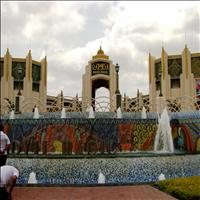 Situated in a far off suburb north of Mumbai, this place is always crowded With stars shooting, and people watching. It has all the facilities a film unit may require, including a temple, a school, college, hospital etc. The surrounding jungles provide ideal spot for romance and thrillers.
Situated in a far off suburb north of Mumbai, this place is always crowded With stars shooting, and people watching. It has all the facilities a film unit may require, including a temple, a school, college, hospital etc. The surrounding jungles provide ideal spot for romance and thrillers.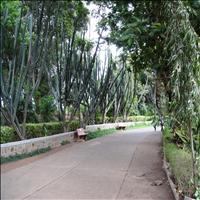 Situated in one of the suburbs of Western Mumbai, Aarey Milk Colony is one of the most modern milk colonies in the world. The Government of Maharashtra built it to provide milk to the residents of Mumbai. Visitors can see the pasteurizing and bottling of milk and other procedures. Along with this the garden is a big crowd puller. Laid and developed on the vast land nearby the dairy, the garden offers a great picnic spots as well. With variety of colourful flowers and various trees, it is popularly known as Chota Kashmir. Many Bollywood films' song sequences are shot here.
Situated in one of the suburbs of Western Mumbai, Aarey Milk Colony is one of the most modern milk colonies in the world. The Government of Maharashtra built it to provide milk to the residents of Mumbai. Visitors can see the pasteurizing and bottling of milk and other procedures. Along with this the garden is a big crowd puller. Laid and developed on the vast land nearby the dairy, the garden offers a great picnic spots as well. With variety of colourful flowers and various trees, it is popularly known as Chota Kashmir. Many Bollywood films' song sequences are shot here.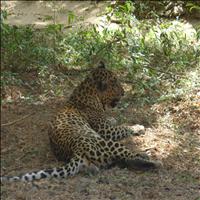 A huge park situated at the end tip of northern Mumbai. The park has many wild animals and has a lion safari taking trips to the jungle to see the great cats in their natural habitats. The park is a big hit with picnickers and with a joy ride in the toy train; the children also love the park.
A huge park situated at the end tip of northern Mumbai. The park has many wild animals and has a lion safari taking trips to the jungle to see the great cats in their natural habitats. The park is a big hit with picnickers and with a joy ride in the toy train; the children also love the park. Situated inside the National Park, these 109 Buddhist caves are evidence of the existence of monastic settlements in 2nd to 9th century AD. They are a collection of Viharas and Chaityas. These Buddhist caves or monasteries, where monks practiced their austerities, are of around the first century AD. And unlike the artistic extravagance of Elephanta, they are Spartan and bare In fact, Kanheri is probably the only clue, to the rise and fall of Buddhism in Western India.
Situated inside the National Park, these 109 Buddhist caves are evidence of the existence of monastic settlements in 2nd to 9th century AD. They are a collection of Viharas and Chaityas. These Buddhist caves or monasteries, where monks practiced their austerities, are of around the first century AD. And unlike the artistic extravagance of Elephanta, they are Spartan and bare In fact, Kanheri is probably the only clue, to the rise and fall of Buddhism in Western India.Timings: 10- to 1800 hrs
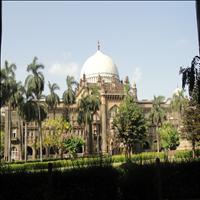 Just a stones throw away from the Gateway of India stands this Indo-Saracen style building of 1914, which is now the museum of Mumbai. The foundation stone was laid in 1905 by the visiting Prince of Wales and hence the name, Prince of Wales Museum. It was converted to a military hospital during World War I. Built with the yellow and blue stones quarried from the Bombay region, the dome is modeled after the Gol Gumbaz of Bijapur. It has small bulbous cupolas on towers, Saracen arches with Muslim jalis as fillers, semi-open verandahs and Rajput jharokhas, crowned by a sparkling white dome. It boasts a good collection of ancient Indus Valley artifacts dating back to 2000 BC, plus some priceless Tibetan and Nepali Art. Chief attraction here is the collection of over 2000 miniature paintings from the various art schools of India. Next to the Museum is the Bombay Natural History Society, which has an extensive collection of local flora and fauna.
Just a stones throw away from the Gateway of India stands this Indo-Saracen style building of 1914, which is now the museum of Mumbai. The foundation stone was laid in 1905 by the visiting Prince of Wales and hence the name, Prince of Wales Museum. It was converted to a military hospital during World War I. Built with the yellow and blue stones quarried from the Bombay region, the dome is modeled after the Gol Gumbaz of Bijapur. It has small bulbous cupolas on towers, Saracen arches with Muslim jalis as fillers, semi-open verandahs and Rajput jharokhas, crowned by a sparkling white dome. It boasts a good collection of ancient Indus Valley artifacts dating back to 2000 BC, plus some priceless Tibetan and Nepali Art. Chief attraction here is the collection of over 2000 miniature paintings from the various art schools of India. Next to the Museum is the Bombay Natural History Society, which has an extensive collection of local flora and fauna.Closed On: Monday
Timings: 10- to 1800 hrs
 Mani Bhawan is one of the important places to visit in Mumbai. Located in a quiet lane, Mani Bhawan is the old Mumbai residence of Mahatma Gandhi and has been turned into a modest museum. The two-storied structure now houses a reference library with over 2000 books, a photo exhibition of the Mahatma's life, and well preserved memorabilia of the Mahatma.
Mani Bhawan is one of the important places to visit in Mumbai. Located in a quiet lane, Mani Bhawan is the old Mumbai residence of Mahatma Gandhi and has been turned into a modest museum. The two-storied structure now houses a reference library with over 2000 books, a photo exhibition of the Mahatma's life, and well preserved memorabilia of the Mahatma.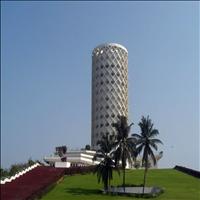 The large domed building; popular with the city's amateur astronomers is the Nehru planetarium. It unfolds mysteries of the universe. Nearby is the cylindrical shaped tall building of the Nehru Science Centre, which is a science park and permanent exhibits on intricacies of life.
The large domed building; popular with the city's amateur astronomers is the Nehru planetarium. It unfolds mysteries of the universe. Nearby is the cylindrical shaped tall building of the Nehru Science Centre, which is a science park and permanent exhibits on intricacies of life.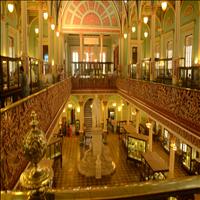 Named after the mother of Marathi king Shivaji, Rani Jijamata Udyan houses the Mumbai Zoo. The Gardens were laid out in 1861. It has many rare and endangered species of animals and birds. The gardens boast of scores of trees, some of which are really old. Within the gardens is the Albert museum that houses a host of local archaeological finds among which merits a huge stone elephant at the entrance, which was found in 1864 at Gharapuri or the Elephanta Island.
Named after the mother of Marathi king Shivaji, Rani Jijamata Udyan houses the Mumbai Zoo. The Gardens were laid out in 1861. It has many rare and endangered species of animals and birds. The gardens boast of scores of trees, some of which are really old. Within the gardens is the Albert museum that houses a host of local archaeological finds among which merits a huge stone elephant at the entrance, which was found in 1864 at Gharapuri or the Elephanta Island. Dhobi Ghat (Mahalaxmi Dhobi Ghat) is a well known open air laundromat in Mumbai, India. The washers, locally known as Dhobis, work in the open to wash the clothes from Mumbai's hotels and hospitals.
Dhobi Ghat (Mahalaxmi Dhobi Ghat) is a well known open air laundromat in Mumbai, India. The washers, locally known as Dhobis, work in the open to wash the clothes from Mumbai's hotels and hospitals.
There are rows of open-air concrete wash pens, each fitted with its own flogging stone. Called the world's largest outdoor laundry, Dhobi Ghat is a very popular attraction among foreign tourists.
 The Gateway of India is a monument built during the British Rule in Mumbai City of Maharashtra state in Western India . It is located on the waterfront in the Apollo Bunder area in South Mumbai and overlooks the Arabian Sea. The structure is a basalt arch, 26 metres (85 feet) high. It lies at the end of Chhatrapati Shivaji Marg at the water's edge in Mumbai Harbour. It was a crude jetty used by the fishing community which was later renovated and used as a landing place for British governors and other prominent people. In earlier times, it would have been the first structure that visitors arriving by boat in Mumbai would have seen. The Gateway has also been referred to as the Taj Mahal of Mumbai, and is the city's top tourist attraction. The India Gate in New Delhi is similar to the Gateway of India in Mumbai. The structure was erected to commemorate the landing of King George V and Queen Mary at Apollo Bunder, when they visited India in 1911. Built in Indo-Saracenic style, the foundation stone for the Gateway of India was laid on 31 March 1911. The final design of George Wittet was sanctioned in 1914 and the construction of the monument was completed in 1924. The Gateway was later the ceremonial entrance to India for Viceroys and the new Governors of Bombay. It served to allow entry and access to India.
The Gateway of India is a monument built during the British Rule in Mumbai City of Maharashtra state in Western India . It is located on the waterfront in the Apollo Bunder area in South Mumbai and overlooks the Arabian Sea. The structure is a basalt arch, 26 metres (85 feet) high. It lies at the end of Chhatrapati Shivaji Marg at the water's edge in Mumbai Harbour. It was a crude jetty used by the fishing community which was later renovated and used as a landing place for British governors and other prominent people. In earlier times, it would have been the first structure that visitors arriving by boat in Mumbai would have seen. The Gateway has also been referred to as the Taj Mahal of Mumbai, and is the city's top tourist attraction. The India Gate in New Delhi is similar to the Gateway of India in Mumbai. The structure was erected to commemorate the landing of King George V and Queen Mary at Apollo Bunder, when they visited India in 1911. Built in Indo-Saracenic style, the foundation stone for the Gateway of India was laid on 31 March 1911. The final design of George Wittet was sanctioned in 1914 and the construction of the monument was completed in 1924. The Gateway was later the ceremonial entrance to India for Viceroys and the new Governors of Bombay. It served to allow entry and access to India.Remarks: Public monument. Open all day.
 Chhatrapati Shivaji Maharaj Vastu Sangrahalaya formerly known as the Prince of Wales Museum is one of the most interesting museums of India located on the Crescent site on the way to the gateway Of India in South Mumbai. It was built to commemorate King George V's first visit to India in 1905 and opened to the public in 1922. Designed by George Wittet in grant Indo-Saracenic style, the museum is set in an ornamental garden and boasts an impressive galleried central hall topped by a huge dome.This museum is divided into three floors with several galleries: art, archaeology, maritime, natural history etc. The ground floor gallery has a sculptures section and the natural history section. The natural history section has a large selection of Indian birds, snakes and stuffed animals ranging from rhinos to monkeys and lions to deer. The ground floor gallery has artifacts from Elephanta Island and Jogeshwari Caves. Other collections include terracotta figurines from the Indus Valley, ivory carvings, Chinese and Japanese art, portrait of Abraham Lincoln, and an excellent collection of Indian miniature paintings etc. In 1990 the museum was awarded Urban Heritage Award of the Bombay Chapter of the Indian Heritage Society.
Chhatrapati Shivaji Maharaj Vastu Sangrahalaya formerly known as the Prince of Wales Museum is one of the most interesting museums of India located on the Crescent site on the way to the gateway Of India in South Mumbai. It was built to commemorate King George V's first visit to India in 1905 and opened to the public in 1922. Designed by George Wittet in grant Indo-Saracenic style, the museum is set in an ornamental garden and boasts an impressive galleried central hall topped by a huge dome.This museum is divided into three floors with several galleries: art, archaeology, maritime, natural history etc. The ground floor gallery has a sculptures section and the natural history section. The natural history section has a large selection of Indian birds, snakes and stuffed animals ranging from rhinos to monkeys and lions to deer. The ground floor gallery has artifacts from Elephanta Island and Jogeshwari Caves. Other collections include terracotta figurines from the Indus Valley, ivory carvings, Chinese and Japanese art, portrait of Abraham Lincoln, and an excellent collection of Indian miniature paintings etc. In 1990 the museum was awarded Urban Heritage Award of the Bombay Chapter of the Indian Heritage Society.Closed On: Monday
Timings: 10.15 am to 6 pm
 Two minutes walking distance from the Gateway of India stands the Taj Mahal Hotel of Mumbai. Rarely does a hotel become a part of a city's legend. But the structure and the history of this hotel has made it a legend. This was the first in the chain of Taj Mahal hotels. It has charming cupolas and oriental décor and was built by Jamshedji Tata in 1903, even before the Gateway was built. Though the beautiful structure has attracted the tourists, the biggest flaw is that the hotel does not face the sea. Later a tower was built beside it in 1974.
Two minutes walking distance from the Gateway of India stands the Taj Mahal Hotel of Mumbai. Rarely does a hotel become a part of a city's legend. But the structure and the history of this hotel has made it a legend. This was the first in the chain of Taj Mahal hotels. It has charming cupolas and oriental décor and was built by Jamshedji Tata in 1903, even before the Gateway was built. Though the beautiful structure has attracted the tourists, the biggest flaw is that the hotel does not face the sea. Later a tower was built beside it in 1974.
Due to heavy security, tourists are not allowed to enter the Hotel, but one can see the magnificent structure from outside.
 This magnificent building, railway station, is a UNESCO World Heritage Site and has been the pride of Mumbaites. Modeled on the lines of the St. Pancras Station in London, Victoria Terminus was built in 1888. Undoubtedly the Raj's piece de resistance, the Italian Gothic style, structure is complete with carved stone friezes, stained glass windows and flying buttresses. At the top of the central dome stands the triumphant figure of Progress. Designed by Frederick William Stevens with influences from Victorian Italianate Gothic Revival architecture and traditional Mughal buildings, the station was built in 1887 in the Bori Bunder area of Mumbai to commemorate the Golden Jubilee of Queen Victoria. Now rechristened after the Marathi hero, as the Chhatrapati Shivaji terminus, it was earlier called the Victoria terminus and still is commonly known as VT.
This magnificent building, railway station, is a UNESCO World Heritage Site and has been the pride of Mumbaites. Modeled on the lines of the St. Pancras Station in London, Victoria Terminus was built in 1888. Undoubtedly the Raj's piece de resistance, the Italian Gothic style, structure is complete with carved stone friezes, stained glass windows and flying buttresses. At the top of the central dome stands the triumphant figure of Progress. Designed by Frederick William Stevens with influences from Victorian Italianate Gothic Revival architecture and traditional Mughal buildings, the station was built in 1887 in the Bori Bunder area of Mumbai to commemorate the Golden Jubilee of Queen Victoria. Now rechristened after the Marathi hero, as the Chhatrapati Shivaji terminus, it was earlier called the Victoria terminus and still is commonly known as VT.
It is one of the busiest railway stations in India serving as a terminal for both long-distance trains and commuter trains of the Mumbai Suburban Railway.
Today the interiors of this magnificent building are open for the public as heritage walk. You can see the beautiful interiors with a guide, who will give you all the details.
Timings: 1100 hrs to 1800 hrs
Remarks: INR 200 per person
GUJARAT & KARNATKA / PC-590 (17 Days / 16 Nights)
Mumbai-Ahmedabad-Khumbariya-Ambaji-Palanpur-Patan-Modhera-Ahmedabad-Lothal-Bhavnagar-Palitana-Bhavnagar-Mumbai-Hyderabad-Bengaluru-Chikmaglur-Mysore-Nagarhole-Bengaluru
Here in Gujarat you will discover centuries of history as spanning the geological core of the earth onto a fascinatingly vibrant future. Gujarat is unique in its geological and topographical landscape. From volcanic outpourings through bedrock to fossil fields of indigenous dinosaurs; from the art of the Neolithic cave painter to the stone masterpieces of a series of civilized architecture. Gujarat has it all. Ancient cave paintings to historic murals, natural and man made caves. Art, history, music, culture, all dovetail within each other to form a wondrous matrix that is the cultural exuberance of the people of the state. Karnataka situated on the southeast coast, mirroring the west, also rests snugly beneath a mountain range---the Eastern Ghats, sloping down to the Indian Ocean. Karnataka is a tapestry of colours, cultures, flavours, landscapes, timelessness and heart stopping beauty. A place where vibrant worlds seamlessly meld into one another every few hundred kilometers. Sedate plains suddenly rise to dizzying mist covered hilly heights, and then plunge with careless abandon in a white watered free fall to become languid rivers that flow past cities where time has stopped altogether, and cities where time rushes a relentless rush to keep up with the world; cities that sometimes escape into the deep quiet of thick forests and sometimes, stretches their arms wide open to embrace the sea.
Detailed Itinerary
Day 1 : Mumbai
Day 2 : Mumbai-Ahmedabad
Day 3 : Ahmedabad-Khumbariya-Ambaji-Palanpur
Day 4 : Palanpur-Patan-Modhera-Ahmedabad
Day 5 : Ahmedabad-Lothal-Bhavnagar
Day 6 : Bhavnagar-Palitana-Bhavnagar
Day 7 : Bhavnagar-Mumbai-Hyderabad
Day 8 : Hyderabad
Day 9 : Hyderabad-Bengaluru
Day 10 : Bengaluru-Chikmaglur
Day 11 : Chikmaglur
Day 12 : Chikmaglur-Mysore
Day 13 : Mysore
Day 14 : Mysore-Nagarhole
Day 15 : Nagarhole
Day 16 : Nagarhole
Day 17 : Nagarhole-Bengaluru
Mumbai-Ahmedabad-Khumbariya-Ambaji-Palanpur-Patan-Modhera-Ahmedabad-Lothal-Bhavnagar-Palitana-Bhavnagar-Mumbai-Hyderabad-Bengaluru-Chikmaglur-Mysore-Nagarhole-Bengaluru
Here in Gujarat you will discover centuries of history as spanning the geological core of the earth onto a fascinatingly vibrant future. Gujarat is unique in its geological and topographical landscape. From volcanic outpourings through bedrock to fossil fields of indigenous dinosaurs; from the art of the Neolithic cave painter to the stone masterpieces of a series of civilized architecture. Gujarat has it all. Ancient cave paintings to historic murals, natural and man made caves. Art, history, music, culture, all dovetail within each other to form a wondrous matrix that is the cultural exuberance of the people of the state. Karnataka situated on the southeast coast, mirroring the west, also rests snugly beneath a mountain range---the Eastern Ghats, sloping down to the Indian Ocean. Karnataka is a tapestry of colours, cultures, flavours, landscapes, timelessness and heart stopping beauty. A place where vibrant worlds seamlessly meld into one another every few hundred kilometers. Sedate plains suddenly rise to dizzying mist covered hilly heights, and then plunge with careless abandon in a white watered free fall to become languid rivers that flow past cities where time has stopped altogether, and cities where time rushes a relentless rush to keep up with the world; cities that sometimes escape into the deep quiet of thick forests and sometimes, stretches their arms wide open to embrace the sea.
Detailed Itinerary
Day 1 : Mumbai
Day 2 : Mumbai-Ahmedabad
Day 3 : Ahmedabad-Khumbariya-Ambaji-Palanpur
Day 4 : Palanpur-Patan-Modhera-Ahmedabad
Day 5 : Ahmedabad-Lothal-Bhavnagar
Day 6 : Bhavnagar-Palitana-Bhavnagar
Day 7 : Bhavnagar-Mumbai-Hyderabad
Day 8 : Hyderabad
Day 9 : Hyderabad-Bengaluru
Day 10 : Bengaluru-Chikmaglur
Day 11 : Chikmaglur
Day 12 : Chikmaglur-Mysore
Day 13 : Mysore
Day 14 : Mysore-Nagarhole
Day 15 : Nagarhole
Day 16 : Nagarhole
Day 17 : Nagarhole-Bengaluru
TIGER TRAIL / PC-615 (14 Days / 13 Nights)
Mumbai-Nagpur-Kanha-Bandhavgarh-Khajuraho-Jhansi-Agra-Sawai Madhopur-Jaipur-Delhi
“The author” wrote Jim Corbett in his famous book “who first used the words ‘as cruel as a tiger’ and ‘as bloodthirsty as a tiger’ when attempting to emphasize the evil character of the villain of his piece, not only showed a lamentable ignorance of the animal he defamed, but coined phrases which have come into universal circulation, and which are mainly responsible for the wrong opinion of the tigers held by all except that very small proportion of the public who have the opportunity of forming their own opinions”. Corbett had several deadly encounters with tigers in Indian forests; even still he opined “....a tiger is a large-hearted gentleman with boundless courage and that when he is exterminated—as exterminated he will be unless public opinion rallies to his support—India will be the poorer, having lost the finest of her fauna”. Come to Ranthambhore in Rajasthan and meet this large-hearted gentleman. You’ll not be disappointed.
Detailed Itinerary
Day 1 : Mumbai
Day 2 : Mumbai-Nagpur-Kanha
Day 3 : Kanha
Day 4 : Kanha-Bandhavgarh
Day 5 : Bandhavgarh
Day 6 : Bandhavgarh-Khajuraho
Day 7 : Khajuraho-Jhansi-Agra
Day 8 : Agra
Day 9 : Agra-Sawai Madhopur
Day 10 : Sawai Madhopur
Day 11 : Sawai Madhopur-Jaipur
Day 12 : Jaipur
Day 13 : Jaipur-Delhi
Day 14 : Delhi
Mumbai-Nagpur-Kanha-Bandhavgarh-Khajuraho-Jhansi-Agra-Sawai Madhopur-Jaipur-Delhi
“The author” wrote Jim Corbett in his famous book “who first used the words ‘as cruel as a tiger’ and ‘as bloodthirsty as a tiger’ when attempting to emphasize the evil character of the villain of his piece, not only showed a lamentable ignorance of the animal he defamed, but coined phrases which have come into universal circulation, and which are mainly responsible for the wrong opinion of the tigers held by all except that very small proportion of the public who have the opportunity of forming their own opinions”. Corbett had several deadly encounters with tigers in Indian forests; even still he opined “....a tiger is a large-hearted gentleman with boundless courage and that when he is exterminated—as exterminated he will be unless public opinion rallies to his support—India will be the poorer, having lost the finest of her fauna”. Come to Ranthambhore in Rajasthan and meet this large-hearted gentleman. You’ll not be disappointed.
Detailed Itinerary
Day 1 : Mumbai
Day 2 : Mumbai-Nagpur-Kanha
Day 3 : Kanha
Day 4 : Kanha-Bandhavgarh
Day 5 : Bandhavgarh
Day 6 : Bandhavgarh-Khajuraho
Day 7 : Khajuraho-Jhansi-Agra
Day 8 : Agra
Day 9 : Agra-Sawai Madhopur
Day 10 : Sawai Madhopur
Day 11 : Sawai Madhopur-Jaipur
Day 12 : Jaipur
Day 13 : Jaipur-Delhi
Day 14 : Delhi
Mesmerizing India tour / PC-558 (12 Days / 11 Nights)
Mumbai-Delhi-Ajmer-Jaipur-Bharatpur-Agra-Aligarh-Lucknow-Delhi
India is a land of diversity. Yet, it has a huge Islamic population intermingled with the existing core culture. Indian history is replete with the cultural and ethical interactions that happened between South East Asia Islamic and pre-existing socio-cultural groups. This tour takes you around the roots and various expressions of South-East Asian Islamic Institutes and their influence in Society.
Detailed Itinerary
Day 1 : Mumbai
Day 2 : Mumbai-Delhi
Day 3 : Delhi
Day 4 : Delhi-Ajmer
Day 5 : Ajmer
Day 6 : Ajmer-Jaipur
Day 7 : Jaipur-Bharatpur
Day 8 : Bharatpur-Agra
Day 9 : Agra
Day 10 : Agra-Aligarh
Day 11 : Aligarh-Lucknow
Day 12 : Lucknow-Delhi
Mumbai-Delhi-Ajmer-Jaipur-Bharatpur-Agra-Aligarh-Lucknow-Delhi
India is a land of diversity. Yet, it has a huge Islamic population intermingled with the existing core culture. Indian history is replete with the cultural and ethical interactions that happened between South East Asia Islamic and pre-existing socio-cultural groups. This tour takes you around the roots and various expressions of South-East Asian Islamic Institutes and their influence in Society.
Detailed Itinerary
Day 1 : Mumbai
Day 2 : Mumbai-Delhi
Day 3 : Delhi
Day 4 : Delhi-Ajmer
Day 5 : Ajmer
Day 6 : Ajmer-Jaipur
Day 7 : Jaipur-Bharatpur
Day 8 : Bharatpur-Agra
Day 9 : Agra
Day 10 : Agra-Aligarh
Day 11 : Aligarh-Lucknow
Day 12 : Lucknow-Delhi
Tour the Exotic land, India / PC-562 (16 Days / 15 Nights)
Delhi-Agra-Jaipur-Samode-Pushkar-Udaipur-Mumbai-Kochi-Alappuzha-Thiruvananthapuram-Kovalam-Thiruvananthapuram-Delhi
A journey starting from the north and ending in south of India. Each place comes as a surprise, each destination fascinates you equally. The mystic India comes alive on this tour. The beauty and the royalty come face to face in this mesmerizing tour of exotic India.
Detailed Itinerary
Day 1 : Delhi
Day 2 : Delhi
Day 3 : Delhi-Agra
Day 4 : Agra-Jaipur
Day 5 : Jaipur
Day 6 : Jaipur-Samode
Day 7 : Samode-Pushkar
Day 8 : Pushkar-Udaipur
Day 9 : Udaipur
Day 10 : Udaipur-Mumbai-Kochi
Day 11 : Kochi - Alappuzha
Day 12 : Alappuzha - Thiruvananthapuram-Kovalam
Day 13 : Kovalam
Day 14 : Kovalam
Day 15 : Kovalam-Thiruvananthapuram-Delhi
Day 16 : Delhi
Delhi-Agra-Jaipur-Samode-Pushkar-Udaipur-Mumbai-Kochi-Alappuzha-Thiruvananthapuram-Kovalam-Thiruvananthapuram-Delhi
A journey starting from the north and ending in south of India. Each place comes as a surprise, each destination fascinates you equally. The mystic India comes alive on this tour. The beauty and the royalty come face to face in this mesmerizing tour of exotic India.
Detailed Itinerary
Day 1 : Delhi
Day 2 : Delhi
Day 3 : Delhi-Agra
Day 4 : Agra-Jaipur
Day 5 : Jaipur
Day 6 : Jaipur-Samode
Day 7 : Samode-Pushkar
Day 8 : Pushkar-Udaipur
Day 9 : Udaipur
Day 10 : Udaipur-Mumbai-Kochi
Day 11 : Kochi - Alappuzha
Day 12 : Alappuzha - Thiruvananthapuram-Kovalam
Day 13 : Kovalam
Day 14 : Kovalam
Day 15 : Kovalam-Thiruvananthapuram-Delhi
Day 16 : Delhi
Mumbai, India Tours

